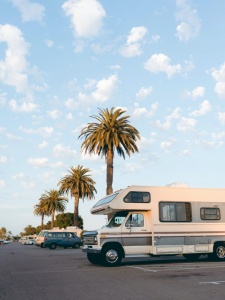RV for Beginners: What Are the Different RV Types

Are you planning to go on an RV trip?
Gone are the days when you had to buy a Recreational Vehicle (RV) if you wanted to go on a road trip.
Nowadays, there are various RV rental platforms such as https://www.rvngo.com/ that gives you the comfort of being able to rent an RV of your choice.
However, if you are a newbie to RV, then there are various things you should research and know about before renting an RV.
The first thing you need to know is that there are different types of RV.
There are 8 different types of RVs out there.
- Travel Trailer.
- Fifth Wheel.
- Lightweight Trailer.
- Class B Camper Van.
- Class C Motorhome.
- Class A Motorhome.
Let us now discuss each type in detail.
Travel Trailer:
Remember the jelly bean shaped non-motorized mobile home that you used to see in old Hollywood movies?
Well, those are basically travel trailers.
They are non-motorized recreational vehicles, meaning they need to be towed by another vehicle.
Travel trailers come in different lengths and shapes, thus comfortably fits all budget constraints.
Travel trailers can be hooked to most trucks and ordinary cars we see on the road, provided they have the power and tow hooks to carry the trailer. Thus, you won’t have to purchase a separate vehicle to tow the trailer.
The average length of a travel trailer is between 13 to 40 feet and up to 10 people can comfortably sleep in a trailer, depending on its size.
Fifth Wheel:
You might have seen trailers attached to trucks wherein it seems to be extended from the truck bed itself.
Well, such trailers are called a fifth wheel RV.
As the fifth wheel trailers are usually attached to the truck bed using a centre-mounted hitch, the maneuverability and stability of the trailer is vastly improved.
Moreover, fifth wheel RVs also offer a larger space as it also utilizes the vacant space on top of the truck bed.
Just like travel trailers, fifth wheel RV trailers can be unhitched at the camp spot of your choice and the towing vehicle can then move freely.
Fifth wheel RVs also have an average length of 25 to 40 feet and can comfortably house 10 people at nights.
Lightweight Trailer:
As the name suggests, a lightweight trailer is supposed to be, well, lighter than standard RV trailers. Again, they are also non-motorized RV.
The benefit of lightweight trailers is that it can be towed using less-powerful vehicles such as crossovers, powerful sedans, light-duty trucks, etc.
Moreover, the reduced weight combined with better aerodynamic design helps in improving fuel efficiency of the towing vehicle as well.
Class B Camper Van:
If all the above options needed a towing vehicle, below is where we enter the real RV world.
Class B RVs, or “Camper Vans” as they’re commonly called, is a type of recreational vehicle that has been really popular in recent years.
If you’ve seen online videos and YouTubers of people living the “Van Life”, then most probably they have a Class B Camper Van.
Vehicles such as the Volkswagen Camper and the Mercedes Sprinter are popular examples of a Class B RV.
Class B Camper Vans are usually fitted with the basic amenities such as a small bed, bathroom, kitchen, etc.
Due to space limitations, only about 2-3 people can comfortably live in a Class B Camper Van with all the basic amenities installed.
Class C Motorhome:
A lot bigger than Class B RVs, Class C motorhomes comfortably accommodate larger families by also being maneuverable at the same time.
For anyone seeking to house 10 or more people in an RV without going too overboard in length, a Class C motorhome is the answer.
Even Class C motorhomes come in various sizes and the larger ones can haul heavier cargo such as bikes, ATVs, etc.
Class C motorhomes have an average length between 24 and 32 feet and can offer sleeping space for 10 or more people depending on its design.
Class A Motorhome:
The big-daddy when it comes to RVs, Class A motorhomes are self-driven just like Class B and Class C.
They are also the largest and can also be the most feature-packed RVs on the road. Hence, large groups of people can comfortably live in such RVs for days and thus is preferred on longer road trips.
Class A motorhomes can be powered by both diesel and petrol engines, just like the other types of motorhomes.
Most of the luxury RVs you see on the road are Class A, as they are very much customizable.
Class A motorhomes can extend above 40 feet depending on the requirements of the owner.
Which RV Should You Pick?
When it comes to picking an RV for your road trip, there are several factors that influence the decision.
Firstly, the number of people and the destination you are planning to go to.
Always make sure to pick RVs that can comfortably navigate through the terrain and roads that you’re planning to go on.
Even though larger RVs are always fun, it may not necessarily be the best option for you.
We hope this article helped you in understanding the basics of the different types of RVs out there.

